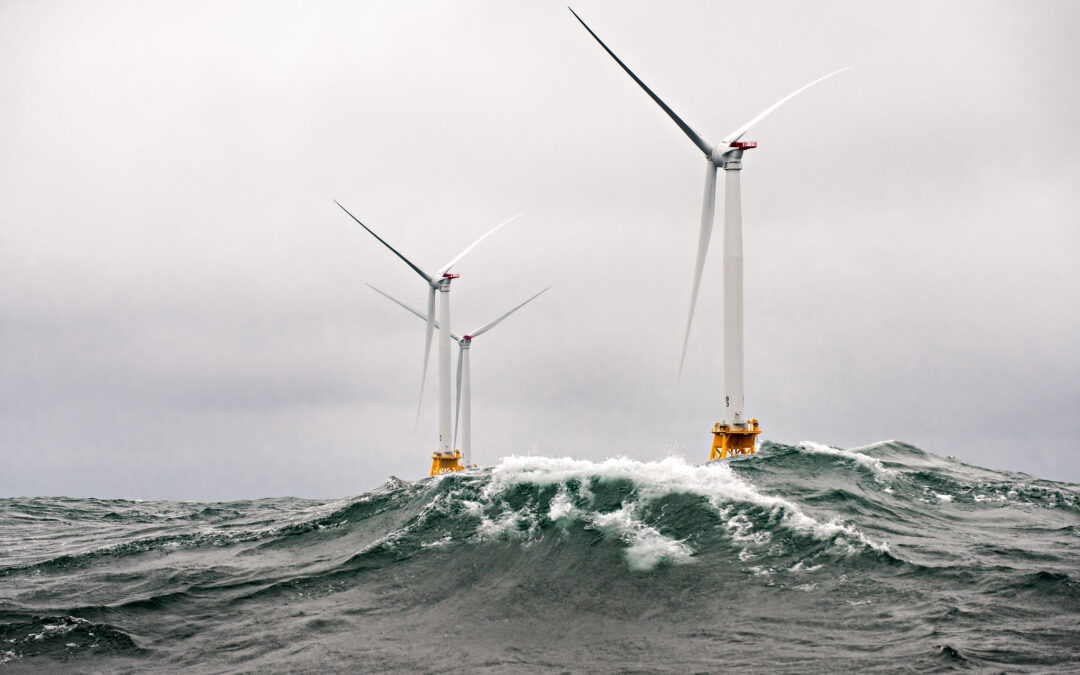Polish state energy giant Orlen has secured €3.6 billion (16.6 billion zloty) in loans from 25 Polish and international financial institutions, including the European Bank for Reconstruction and Development (EBRD), to build the country’s first offshore wind farm. The financing will cover 80% of the project’s costs.
Investment in the Baltic Sea wind farm – which has a planned capacity of up to 1.2 GW, equivalent to 2-3% of Poland’s current electricity generation – is expected to be launched this year and be completed in 2026.
As well as the EBRD – which is providing a loan of €140 million – other lenders include the European Investment Bank (EIB) – the lending arm of the European Union – the Investment Fund of Denmark and Export Development Canada
We're proud to support a milestone investment to aid Poland’s renewable energy generation and decarbonisation targets!
€140 million for the first offshore wind farm in Poland!
The milestone project represents a significant step in the transformation of country’s energy sector! pic.twitter.com/G4OG193KNv— The EBRD (@EBRD) September 19, 2023
The loan agreements with the lenders were signed by Baltic Power, a company in which Orlen has a 51.1% stake. The remaining 48.9% is owned by Amsterdam-based NP Baltic Wind. Loans will be granted for 23 years.
On top of the €3.6 billion in financing, the company will be able to use additional and reserve credit lines of 1 billion zloty and €600 million respectively, reported Rzeczpospolita daily.
The overall project budget is estimated at about €4.73 billion, including capital expenditure with insurance (amounting to around €4.05 billion).
Zawarliśmy umowy kredytowe na finansowanie projektu Baltic Power, pierwszej farmy wiatrowej, która powstanie na polskich wodach Bałtyku. Porozumienie zawarte z konsorcjum 25 polskich i międzynarodowych instytucji finansowych jest jednym z kluczowych elementów procesu…
— Daniel Obajtek (@DanielObajtek) September 19, 2023
The wind farm will be located around 23 kilometres off Poland’s Baltic coast, near Łeba and Choczewo, and is intended to comprise of 76 wind turbines, each with a unit capacity of 15 MW.
Orlen estimates that, once completed, the project will provide clean energy to more than 1.5 million households and during the initial five years of operation could generate an additional average annual free cash flow of approximately €140 million. Baltic Power’s EBITDA could reach around €400 million on average per year.
Baltic Power is one of Orlen’s key projects in a bid to achieve 9 GW of installed renewable energy capacity by 2030. It will help to avoid approximately 2.8 million tonnes of CO2 emissions annually.
Poland’s climate ministry has outlined plans for the country to generate three quarters of its electricity from zero-emissions sources by 2040, with 51% coming from renewables and almost 23% from nuclear https://t.co/CksVqGQXkV
— Notes from Poland 🇵🇱 (@notesfrompoland) April 4, 2023
As part of its energy transition strategy, the company also recently announced a $1 billion (4.2 billion zloty) investment in carbon capture and storage technology in Norway.
Poland, the EU’s most coal-dependent country, this year set a new target to produce three quarters of its energy from renewables and nuclear by 2040, with offshore wind power expected to amount to 5.9 GW by 2030 and 18 GW in 2040.

Notes from Poland is run by a small editorial team and published by an independent, non-profit foundation that is funded through donations from our readers. We cannot do what we do without your support.
Main image credit: Dennis Schroeder/NREL (under CC BY-NC-ND 2.0)

Alicja Ptak is deputy editor-in-chief of Notes from Poland and a multimedia journalist. She has written for Clean Energy Wire and The Times, and she hosts her own podcast, The Warsaw Wire, on Poland’s economy and energy sector. She previously worked for Reuters.



















